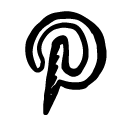 Consider these ideas as starting places or inspiration. You don’t have to do any of them as they are listed. The goal is simply to think through some of the possibilities and give you some more examples for your own project.
Consider these ideas as starting places or inspiration. You don’t have to do any of them as they are listed. The goal is simply to think through some of the possibilities and give you some more examples for your own project.
- Author’s Inspiration: Capture how the text might have been composed by pinning artifacts an author might collect while composing a text. As an example, what would Steinbeck collect while working on The Grapes of Wrath? Think about inspirations and research!
- Character’s Special Event: Create the pinboard a character would make while planning a special event, like moving to a new home, planning for the birth of a baby, or going on a trip. For instance, what would Hermione Granger pin as she was thinking about returning to Hogwarts for her second year?
- Figure’s Hobby or Research: Gather pins a character or historical figure might collect to focus on a special interest, like a hobby or favorite subject. Think about how the collection reveals the person’s changing or growing knowledge about the topic. What would Betsy Ross have pinned as she thought about her work as a seamstress?
- Essayist’s Evidence: Collect the resources that an essayist might gather while working on a particular piece. Think about illustration and evidence for the piece and create a sort of multigenre version of the essay. Imagine, for example, what Thoreau might have collected while working on Walden.
- Witness’s Momentos: Take the viewpoint of first-person witness to an historical event, and create a pinboard that illustrates what you saw and noticed. For instance, what could you collect if you were on Wall Street during the week of the stock market crash in 1929?
- Missing Details: Build a pinboard that fills in missing details for an event in the story or that provides the missing details on how something came to be. For a fictional story, work within what you know about the character and the situation; for a nonfiction story, stay within the facts and details that are established (that is, don’t make things up).
- Figure’s Goals: Think about what a character wants to achieve, and create a pinboard the character would make while thinking about those goals. You could focus on the career that a fictional character might want to pursue. If you focus on a real person, think about the things that person might collect that would show his or her interests. For example, what might Sally Ride have pinned as a child (assuming Pinterest existed then)?
- Fashion: Focus on a character’s fashion sense, and build a pinboard of clothes and accessories that the character would like. Think about key events in the story and collect potential outfits that might work for the different events. Search for clothes that fit the time period of the story you are working on.
- Recipes: Compile the recipes that a character would save or that a group of characters might save. What would go into a fairy tale cooking pinboard, or the collected cooking pins of Sleepy Hollow?
- Scrapbook: Design a scrapbook that a character would make after a trip or event. Think about the places that the character goes and the things he or she would see, and find ways to capture the high points and some of the less obvious moments. Be sure to stay true to the time period of your story.